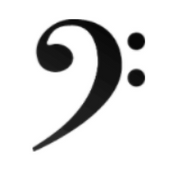Uncategorized
How to Read Bass Clef
Bass Clef Notes
Reading music is very much like learning a new language.
We have a series of symbols that, out in a piece of paper, we immediately decipher them into an understandable sound. However, in this genre, we emit this sound in a musical, melodic sound rather than a spoken sound.
Like in languages we have many dialects, we also have this in music as we have many different clefs we read on. This is for intonation and registration. Before we jump into learning how to read bass clef notes piano, we need to understand where this comes from and why we use it.
Reading Bass Clef on Piano
The bass clef is used to register the lowest sounds on the stave. It is used for instruments such as the cello, double bass, baritone in the human voice, or for registering the low sounds on the piano, that is, from middle C (C4) to the left on the keyboard. In piano writing the bass clef is found on the lower stave, which is typically played with the left hand.
The bass clef is situated on the fourth line of the slave, followed by two points which state this position. Seeing as the bass states the name of the line, this fourth line is called F. And we find this next F under middle C (F3), and knowing the name of this line, we can find names of the other notes.
This is due to register reasons, as these instruments are designed to play very low bass notes; therefore the register is shifted low as well in order to read more comfortably.
How to read bass notes on Piano? Pianists use the bass clef to read the left hand piano notes.
How to Draw a Bass Clef Note:
The Bass Clef is notated like this
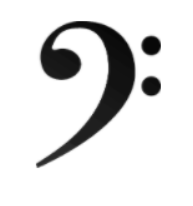
Bass clef
To read the F clef, we would start on F; obviously, however, we would read this note on the upper second line of the staff.
Bass clef notes

This clef initially was like a big “F”, as, during the early 16th century, it was written backwards from the way the F is written today. Below, is a progression of the clef:
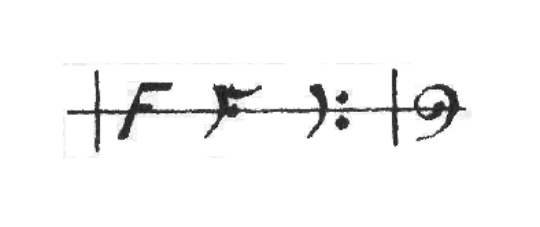
Getting into Practice
As we are very used to reading piano music with bass clef, many of us would face a big challenge when jumping into reading a new “language” or clef variation.
Therefore it is recommendable that if you want to know deeply how to read the bass clef and to start or either improve your reading skills, practice a lot!
Practice makes perfect, especially in learning a new musical method.
Tips on How to Read the F Clef Note
Think about the spaces and lines and use them. With the alphabet, count from G starting on the bottom line and continue in its corresponding order until you reach G again. (G, A, B, C ,D, E, F, G). All of the notes should be aligned in order like in the graphic below:
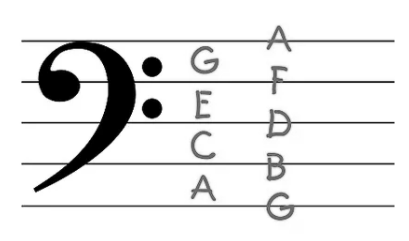
The next step is looking at easy exercises that put the notes into a musical order as in scale format. However, the order of the notes should be altered.
The more you practice, the better you will become!
Reading the Bass Clef Note in a Score
We also need to get in touch with our analytical skills and understand the components of the staff. The Bass clef looks very similar to the treble clef, however, it has a different shape, and the notes are displaced. This means that F will stand in a line, instead of in space as with the treble clef. Start with memorizing the notes in the spaces and then learn the notes present in the lines. Many pianists use different hints to remember them such as acronyms like “Any Cow Eats Grass” that stands for notes A, C E and G present in the spaces. For the notes present in the lines we would use “Grizzly Bears Dance For All”, which represent the notes G, B, D and F present in the lines.
Another good tip is to remember that our Middle C will be placed this time in the first ledger line above the staff.
Now it’s time to put your sight-reading into practice! For learning the low bass clef notes and how to read them, start with easy and simple songs:
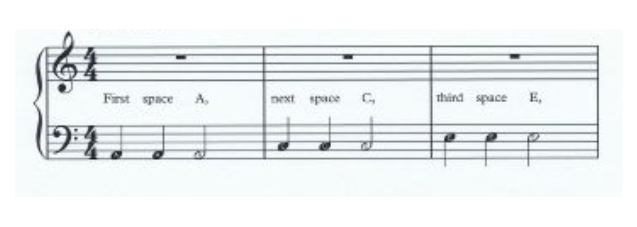
Reading songs will increase the difficulty and promote a faster improvement in your reading skills as you would start looking at intervals, chords and longer tied melodies. When practicing in this clef, start slowly and follow a developmental process, in which weekly, you must test yourself and track very well your improvements. You got this!
Author: Ana Ortiz Wienken
#bass #bassclef #bassnotepiano #readingbassclef #bassclefnoteonpiano #basscleffnotespiano

